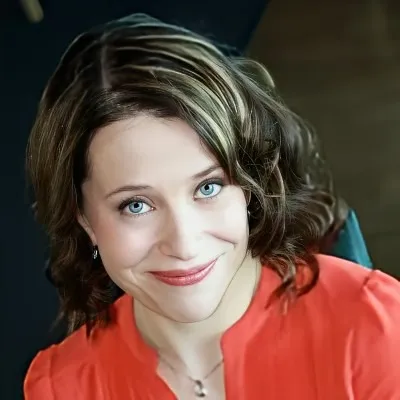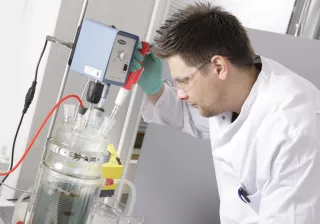Spatial computing and extended reality

VTT’s spatial computing and extended reality services empower businesses by enhancing understanding of complex environments, offering visual support during tasks, and promoting autonomous operations. By integrating data from various sensors, we create a holistic view of physical environments. Our expertise spans the entire pipeline, from autonomous platforms and sensor inputs to sensor data analysis, visualisation and user interactions.
Key facts
Spatial computing and extended reality pave the way for autonomous industrial operations, better decision-making and enhanced human worker safety, especially in demanding sectors such as space, defence and non-road mobile machinery.
VTT harnesses the power of the complete spatial computing pipeline, integrating the physical and digital worlds and enabling users to navigate and interact in physical environments through augmented reality (AR), virtual reality (VR) and mixed reality (MR).
Leveraging our expertise in various sensor modalities, software toolkits for data simulation and analysis, and extensive IP, we help you accelerate your product development and sharpen your competitive edge.

Spatial computing and extended reality deliver the right information at the right place and time
Today, the degree of automation and real-time sensor data in various systems has grown dramatically. Spatial computing and extended reality (XR) enhance our ability to interpret and navigate our surroundings, effectively leveraging this wealth of data.
Through technologies like Simultaneous Localisation and Mapping (SLAM), augmented reality (AR), virtual reality (VR) and mixed reality (MR), you can create context-aware, immersive experiences that enrich your spatial awareness while integrating vast amounts of sensor data.
These technologies empower you to visualise complex environments, interact with real-world objects and make informed decisions based on the intricate and dynamic contexts you operate in. This progression leads to more autonomous operations, allowing machines to act independently when they understand their surroundings while providing humans with support based on enhanced environmental awareness.

Partner with VTT for a turn-key solution that spans all aspects of the spatial computing pipeline
At VTT, we empower you by integrating data from various sensors to create a holistic view of physical environments. Our expertise spans the entire pipeline, from autonomous platforms and sensor inputs to sensor data analysis, visualisation and user interactions.
Autonomous platforms
We have extensive knowledge of various autonomous platforms, from mobile robotics to drones. We can help you select and equip suitable autonomous platforms for sensor data collection and autonomous operations.
Sensor inputs
Capturing 3D data from the environment allows us to simulate new sensor data for training purposes.
By generating synthetic data and simulating imaging sensor modalities, we can enhance the training of machine learning models. This approach accelerates the development of new data analytics tools and improves model accuracy.
We utilise industry-leading techniques, including data augmentation, generative adversarial networks and simulation-based modelling, to achieve these goals.
Example sensor modalities:
- LiDAR
- RGB/RGB-D cameras
- Frequency-modulated continuous wave radar (FMCW) and
- Auxiliary information like GPS and IMU.
Sensor data analysis
We tailor our processing of 3D data to meet specific use cases. Our advanced sensor data analytics enable applications such as:
- Obstacle and distance detection, autonomous decommissioning and progress monitoring
- Multiple target detection, tracking and state estimation (e.g., people tracking, pose estimation, moving target tracking)
- Vehicle localisation, tracking and fleet monitoring
- Anomaly detection or specific object identification.
Interaction and AR/MR/VR-assisted visualisation
We strive to identify practical applications for VR and AR. Our human-centered approach starts with a deep understanding of user needs, technological proficiency and the context of use, particularly in demanding environments. We focus on enhancing safety, minimising errors, optimising productivity and making work more enjoyable.
By enabling dynamic interactions and enhancing decision-making through visualisation, we can use AR/MR/VR to create visual representations. You can use the data to facilitate interactions between humans and machines, as well as interactions among machines themselves, fostering a more efficient and effective operational environment.
Example use cases include:
- Enhanced product service & maintenance with AR
- VR enhanced training and scenario planning
- VR enabled remote operations
Why VTT?
Our extensive background in spatial computing and extended reality combined with our pilot facilities for robotics and extended reality in Oulu, Tampere and Espoo ensure a robust environment for innovative collaboration, empowering our customers to build and pilot complete industrial solutions for new use cases.
Our IP and SW portfolio on sensor data simulation, analysis and AR/VR-assisted operations is available for licensing, helping you accelerate your product development and achieve a competitive advantage in the market.
Areas in which we can support you
Here are some areas we can support you in:
- Sensor simulation and synthetic datasets for customer-specific use cases
- Full spatial computing solution development and piloting
- Creating AR/VR applications. VTT’s multiplatform software library Alvar includes features such as multi-markers, image markers, pointcloud-based tracking, model-based tracking and content creation & integration, and is available for licensing.
Some questions we can help you with
How can I ensure that spatial computing and extended reality solutions are integrated with our current systems?
What platforms to use for content creation?
Can you help me create digital twins, interactive simulations or guided procedures tailored to our industry?
There is a strong interest in the AR field from ESA and the way VTT works with challenges of interest to ESA. So VTT is on a path that we ESA see as very fruitful – both for spacecraft testing and human space flight applications.
Cases
Augmented reality supports astronauts in complex repair tasks
Training astronauts to maintain advanced equipment before a mission is extremely time-consuming. To address this challenge, ESA and VTT developed a head-mounted AR tool that visually guides astronauts through maintenance tasks and facilitates training during the mission.
Extended reality adds remote operation capabilities in a harbour setting
Operating a remote-controlled reachstacker to position containers is challenging because perceiving depth accurately from video screens is difficult. To address this issue, Kalmar and VTT developed a digital twin-based XR setup to design and enhance operator awareness and facilitate remote control using a headset and intuitive hand gestures.
Enhancing construction productivity and cutting carbon emissions through automation
The construction industry, worth $14 trillion, faces challenges like stagnant productivity, project risks and high CO2 emissions due to poor coordination among numerous companies. The ACTOR project, which includes VTT as a key member, addresses these issues by providing real-time situational awareness through automation, using technologies like robotics, AI and extended reality to ensure that all participants have timely access to essential information.
Videos on spatial computing and extended reality solutions
Extended reality for remote operations

Digital Visual Management for building inspection

Mixed reality for training

How to work with us
We are happy to collaborate with you throughout the entire journey, from the initial idea to implementation, or anywhere in between. We customise the project to suit your specific needs. Following an initial assessment, we can offer you a range of options, including the following:
-
Customised partnership
Every research case is unique, and we’re happy to tailor our services to your needs. We’ll take you from idea to prototype without hassle. -
Cooperative project
We frequently participate in research and development projects with multiple business partners and funding agencies. In cooperative projects the risk is split between multiple organisations, and everyone benefits from the results. -
Our networks and ecosystems at your disposal
We are happy to put you in touch with the ideal sparring and development partner.
Publications related to extended reality
We have a large database of publications in our research portal Pure. Find peer reviewed publications related to extended reality by clicking the button below.








